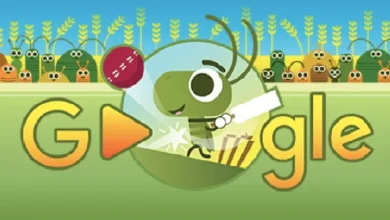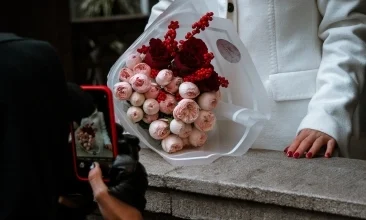Bubble Font: Why This Trendy Style is Perfect for Your Designs

Bubble fonts have become a popular trend in the world of design, infusing playful and dynamic elements into various creative projects. Whether you’re designing a logo, creating a fun poster, or crafting an eye-catching social media post, bubble fonts offer a whimsical touch that can make any project stand out. But what exactly is a bubble font? How do you use it effectively? In this article, we’ll dive into everything you need to know about bubble fonts, including their history, best use cases, how to choose the right one, and more.
1. What is a Bubble Font?
At its core, a bubble font is a typeface characterized by rounded edges and a soft, inflated appearance. These fonts often have a bold, cartoonish quality, making them perfect for designs that need to evoke a sense of fun, joy, or lightheartedness. The round shapes resemble the soft curves of bubbles, making the text feel playful and inviting.
Bubble fonts are often used for designs aimed at younger audiences or projects that require a cheerful, informal tone. They differ from traditional fonts like serif or sans-serif, which tend to have more structured, linear forms. While bubble fonts maintain a high degree of legibility, they are not meant for formal or serious designs, as they create a sense of casualness. This makes them ideal for party flyers, children’s books, entertainment logos, and other creative projects that need to feel lively and vibrant.
One of the key characteristics of bubble fonts is their versatility. Although they are often associated with playful designs, they can be used across various media, including digital art, print materials, and social media posts. Many bubble fonts are customizable, allowing designers to adjust the thickness of the strokes, the spacing between characters, and even the shape of the bubbles themselves. This makes it possible to create a font that fits the exact mood and style you want to convey.
2. The History and Evolution of Bubble Fonts
The evolution of bubble fonts can be traced back to the early days of graphic design. The bubble style emerged in the 1960s and 1970s, drawing influence from the playful typography seen in comic books and advertisements of that time. These fonts were designed to grab attention and convey a sense of excitement and energy, making them a favorite in pop culture during the era.
Bubble fonts became especially popular in the 1980s and 1990s, thanks to the rise of graffiti art and street culture. Artists used rounded, bold letters to create graffiti tags, and these styles influenced the design world as a whole. During this time, bubble fonts began appearing on posters, album covers, and even TV shows, all contributing to their widespread recognition and appeal.
In the digital age, bubble fonts have continued to thrive, evolving to meet the needs of modern design. Today, bubble fonts are used not only in street art and entertainment but also in corporate branding and marketing materials. The resurgence of retro design trends in recent years has also helped bubble fonts find their way into a new generation of designs. With the rise of social media platforms like Instagram and TikTok, playful typography has become more popular than ever, with bubble fonts taking center stage in visual branding.
As designers embrace digital tools and software, the availability of bubble fonts has expanded dramatically. Websites like DaFont, Font Squirrel, and Google Fonts offer a wide variety of bubble fonts, making it easier than ever for both amateur and professional designers to incorporate them into their work.
3. How to Use Bubble Fonts in Design Projects
Bubble fonts are incredibly versatile, but like any design element, they should be used thoughtfully to ensure they enhance the overall aesthetic of a project. Here are some key considerations when using bubble fonts in your designs.
Best Use Cases for Bubble Fonts
Bubble fonts are best suited for projects that require a casual or fun atmosphere. For example, if you’re designing a birthday party invitation, bubble fonts can add a cheerful touch. They’re also widely used in children’s books, advertisements for toys or games, and promotional materials for events that aim to create an upbeat, youthful vibe.
Bubble fonts are also effective for creating logos for brands that want to convey a sense of fun, creativity, or energy. Brands in the entertainment, gaming, or lifestyle industries often incorporate bubble fonts into their logos to appeal to a broad, often younger, audience. Additionally, bubble fonts are popular on social media, especially for posts that are light-hearted, engaging, or humorous.
Pairing Bubble Fonts with Other Design Elements
One of the keys to using bubble fonts effectively is knowing how to pair them with other design elements. Bubble fonts can be paired with bold colors and playful patterns to further enhance their fun vibe. Bright, primary colors like red, yellow, and blue work particularly well with bubble fonts, as they reinforce the playful mood.
While bubble fonts are best for informal designs, they can be balanced with more neutral or minimalist elements to avoid overwhelming the viewer. For example, combining a bubble font with a clean, sans-serif body text can help maintain readability while still showcasing the fun and creative nature of the bubble font. Additionally, keep in mind that bubble fonts often work best in large sizes, where their unique shape can be fully appreciated.
4. Choosing the Right Bubble Font for Your Project
Choosing the right bubble font for your project is crucial to ensuring that it aligns with your overall design goals. There are many different types of bubble fonts, ranging from thick, bold versions to softer, more delicate ones. Here’s how to make sure you select the perfect font.
Consider Your Brand or Theme
When choosing a bubble font, consider the mood and tone of your project. If your design is aimed at a younger audience, you may want to choose a bold, chunky bubble font with exaggerated curves. For a more sophisticated or retro look, a lighter, more refined bubble font could be a better fit. Be sure to think about how the font will reflect the brand or theme you’re working with.
Popular Bubble Fonts
Some popular bubble fonts include “BubbleGum,” “Comic Sans,” and “Lobster.” These fonts are widely available online and come in various styles and weights. If you’re looking for something more unique, consider browsing font libraries like DaFont or Font Squirrel, where you can find a wide range of bubble fonts, both free and premium.
Customization
Many bubble fonts are customizable, so don’t be afraid to tweak them to fit your needs. Adjusting the spacing between characters, changing the thickness of the strokes, or modifying the color can help create a font that is truly your own. Customizing a bubble font can help ensure it aligns perfectly with your overall design vision.
5. Tools and Resources for Working with Bubble Fonts
To work with bubble fonts, you’ll need the right design tools. Fortunately, there are plenty of options available, whether you’re a professional designer or a hobbyist. Here are some of the best tools and resources for working with bubble fonts.
Graphic Design Software
Professional design software like Adobe Illustrator, Photoshop, and InDesign supports a wide range of bubble fonts, allowing you to create custom designs. These programs offer advanced features like text manipulation, color editing, and layering, making it easy to incorporate bubble fonts into complex designs.
Online Tools and Resources
If you’re looking for something simpler, online tools like Canva and PicMonkey allow you to easily access and use bubble fonts. These platforms come with pre-designed templates that you can modify with your preferred bubble fonts. Additionally, websites like DaFont and Font Squirrel provide a wide selection of free and paid bubble fonts that you can download and install for your projects.
Conclusion
Bubble fonts are a fun, versatile design element that can breathe life into any project. Whether you’re designing for a playful brand, creating eye-catching social media posts, or crafting promotional materials for a children’s event, bubble fonts add personality and a touch of whimsy. By understanding their history, best use cases, and how to choose the right font for your project, you can make the most of this popular design trend. So, get creative and start incorporating bubble fonts into your next design—your audience will love it!




